Fonz's Favorite Frames: "The Last Of Us: Season 1"
Welcome to another blog post of Fonz’s Favorite Frames. Today I’ll be sharing with you my favorite edited scene in HBO’s hit series, The Last Of Us (Season 1). If you’re new here, I basically will be picking one scene from the entire series that I recommend you look out for for the film editing. Note that in every blog post, there will be spoilers about the show so please watch the show (specifically Episode 1 for this post) before reading on. The scene I selected was edited by series editor, Timothy Good.
So without further ado, here is my choice for the best edited scene in The Last of Us. Drumroll please…
The Opening Talk Show Scene.
Before we break the editing down, let’s go over the context and story of what’s happening in the scene. Why I love this scene so much is because it sets up the entire series so well in less than four minutes. It’s 1968 - Dr. Newman, an epidemiologist, foreshadows the chilling narrative of how fungus would end humanity. It’s executed so well through a talk show host and epidemiologists à la The Tonight Show With Johnny Carson but with a grim undertone. Dr. Newman shares the scientific process of how fungi can evolve to infect our bodies and control us, basically to use us as hosts and then treat us as puppeteers while it takes over our minds. He then continues to share that the fungi will infect everyone around them and will easily spread all over the world. And currently with no cure, if this becomes true, it’ll be the end of humanity as we know it.
Telling Not Showing.
From an editorial (and writing/structure placement) standpoint, this is such a creative way of teasing the audience of what’s to come. In this case, they went with “Telling Not Showing” which works so well. Most of the time, it’s always better to show the audience versus telling them through dialogue. But for this particular scene, it makes for a chilling sequence as we start to envision this scary fungi scenario become a reality in our own head.
Imagine if the Editor intercut pieces of the fungi evolving and taking over the minds of humans throughout the interview. It would be giving away too much. We want the audience to use their imagination to come up with their visuals during this conversation, that’s way more scarier than showing them outright. This is one of the decisions I loved that Timothy Good made. Whether or not they spoke about intercutting scientific footage, I’m glad they kept it without any additional visuals.
Think about it, imagine quick cuts to the evolution of fungi to the full blown Infected while the epidemiologist was speaking. For instance, after he says “Fungi can alter our very minds”, we cut to microscopic footage of the fungi growing and evolving. And then when he explains how it uses us as puppeteers, we then show quick cuts of the Infected. This all could make for a great edit actually, but again, it’s giving away too much. I don’t want to see the Infected within four minutes of the show’s opening scene, let me be curious and wonder what that will look like. What were you thinking about when he was saying this? Everyone’s answers will be different and that’s the point. Build it up so that when we do see it, it pays off well and is more emotionally charged. Remember, our imagination as audience members is more powerful than any visuals the show could ever give to us. And because it’s our own imaginations, we feel it more in ourselves since it’s our own thoughts. Less is more. And this is what this scene achieved so well.
The Shots Hit The Right Story Beats.
I loved this scene because of how pinpoint perfectly the editing hit the right story beats. The use of wide shots, medium shots, close-ups were all surgically placed in the correct moments of the scene in the most simplistic way possible. What I’ve learned on this show is to keep it simple. Editor Timothy Good didn’t need flashy editing to get his point across here. He’s letting the performances speak for itself and he’s just guiding us through it all. That’s a great editing choice!
Take a look at this. In the beginning part of the scene where they start sharing facts about a potential global pandemic, Editor Timothy Good stays on mostly wide shots and medium wide shots. Make the correlation of the gravity of the dialogue to the types of shots Timothy uses. Therefore, when we’re on the wide, it’s mostly innocuous information at first so Timothy stays back, meaning it doesn’t need us to “pay attention” to what they’re saying just yet. Look at the wide shots that happen under these lines of dialogue, again pay attention to the correlation between the dialogue of what Dr. Newman is saying versus how Timothy keeps us at a distance through the wide shots.
“And that’s your biggest worry? Yes, any type of virus, but mostly something similar to influenza…”
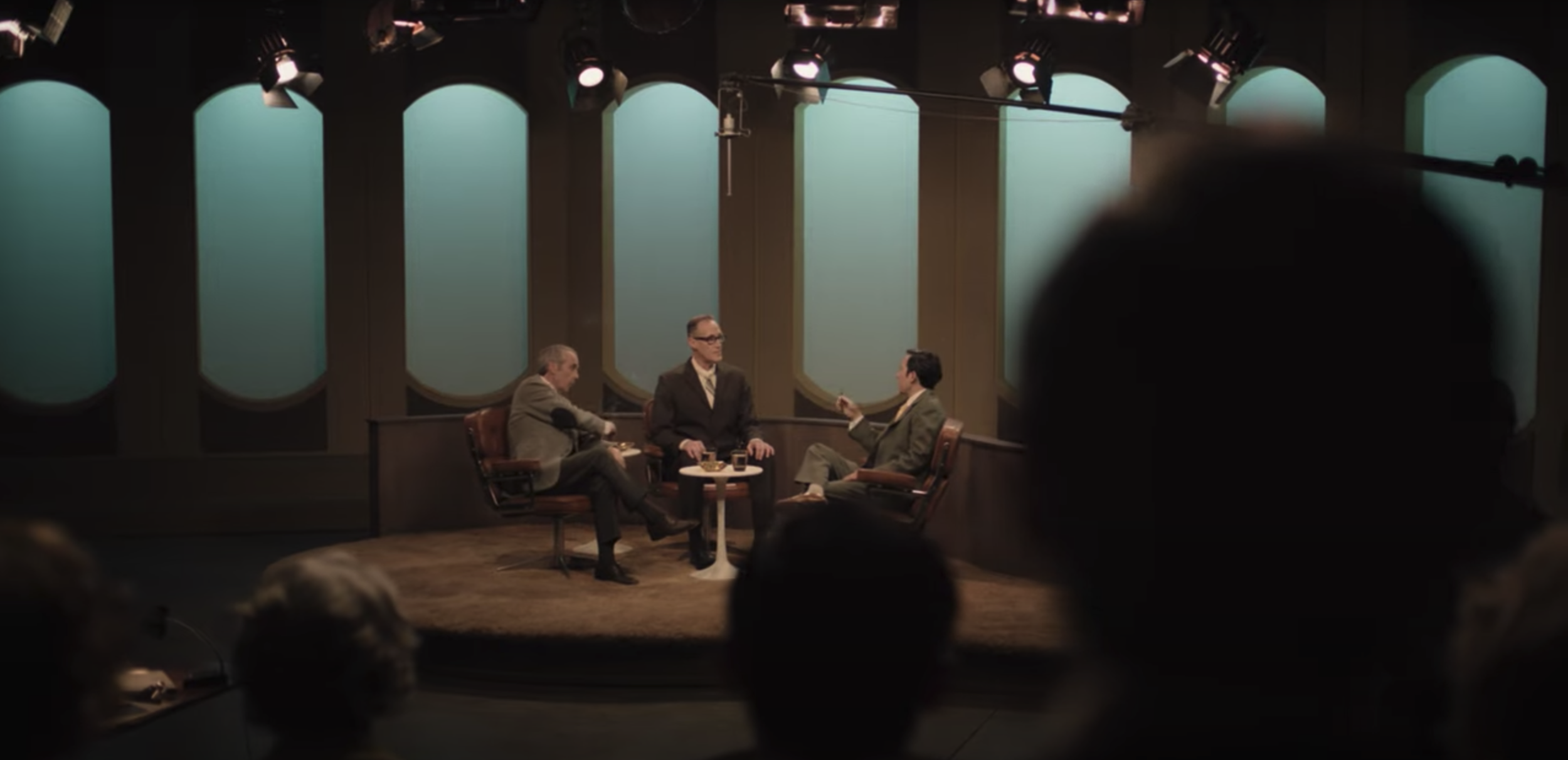
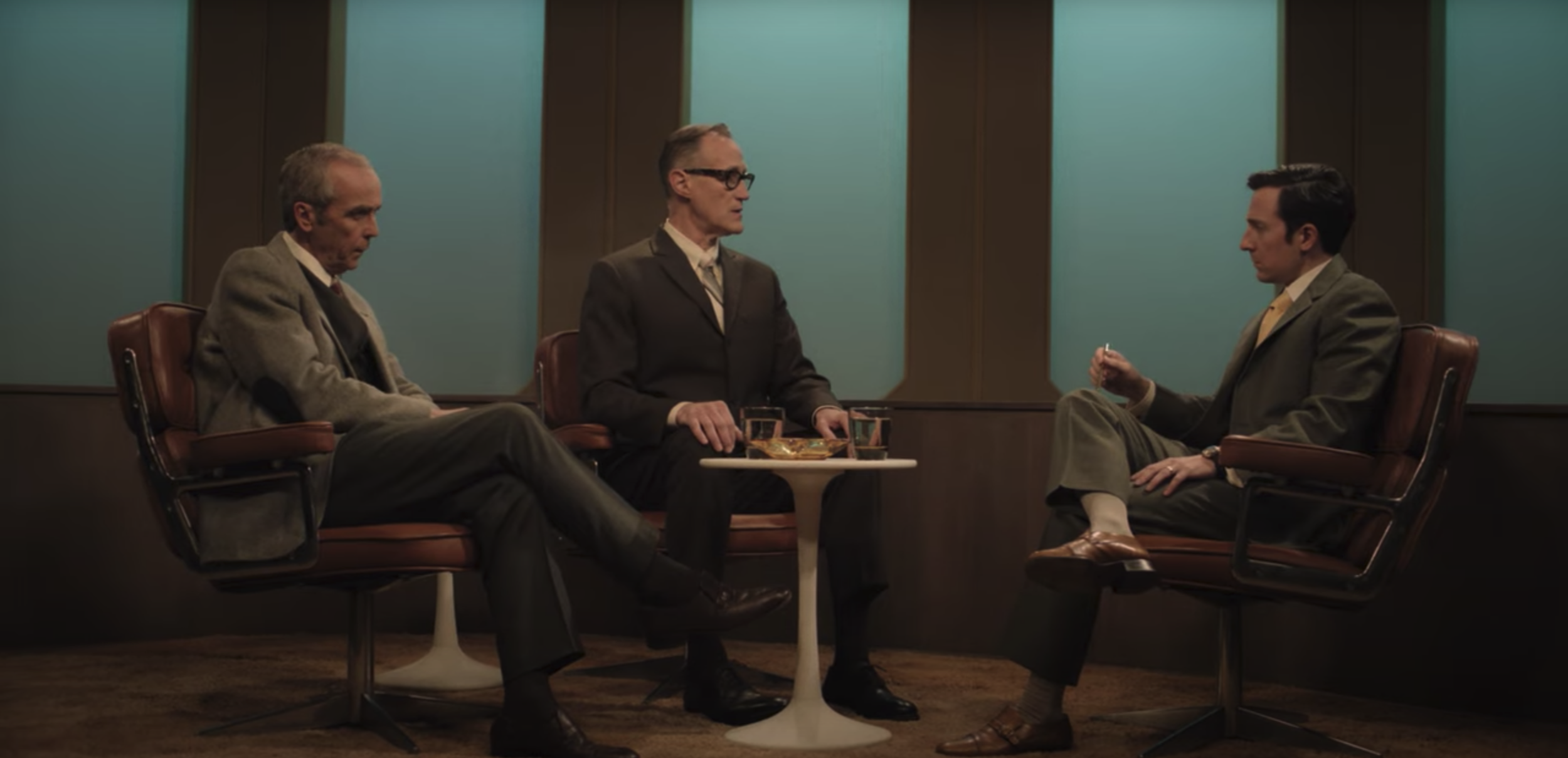
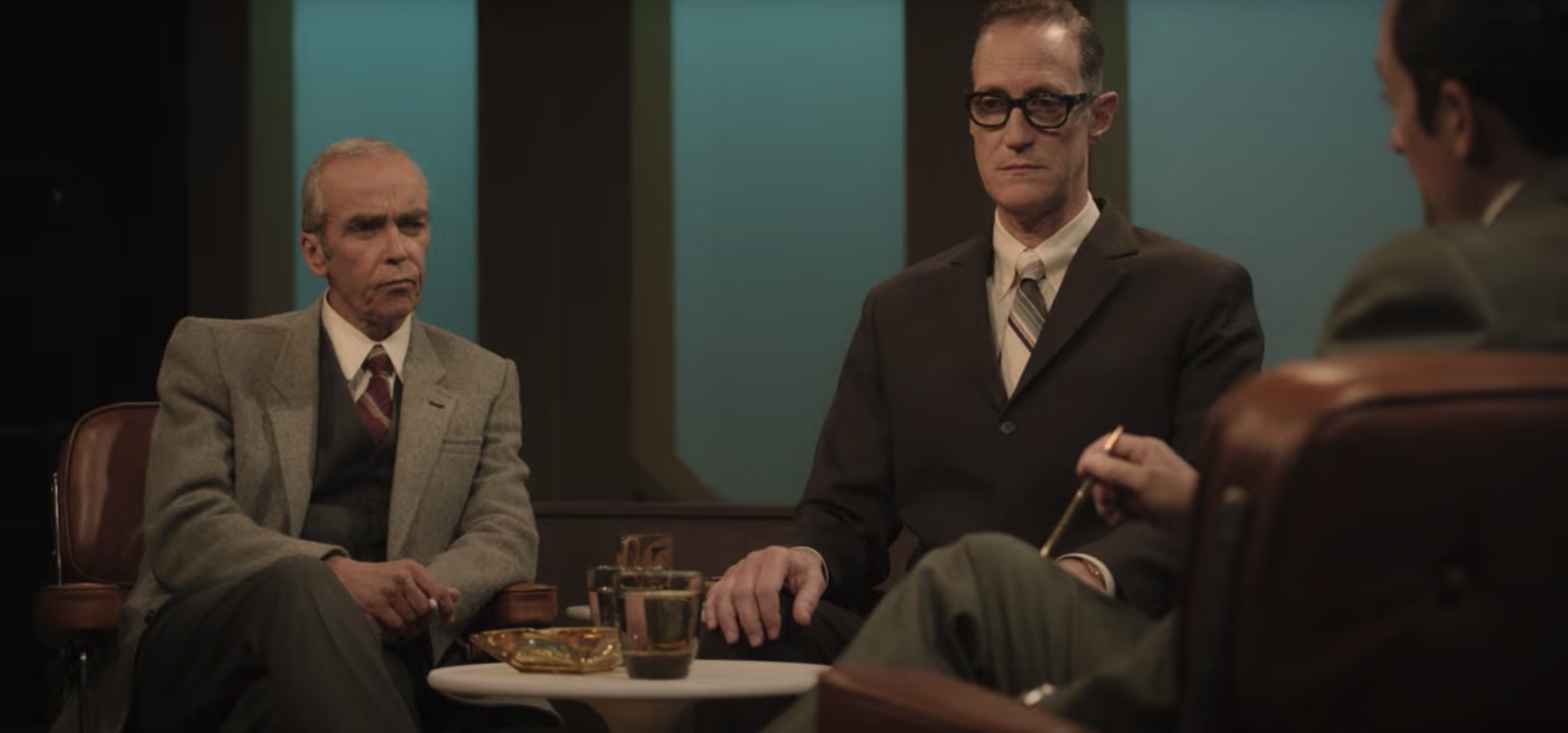

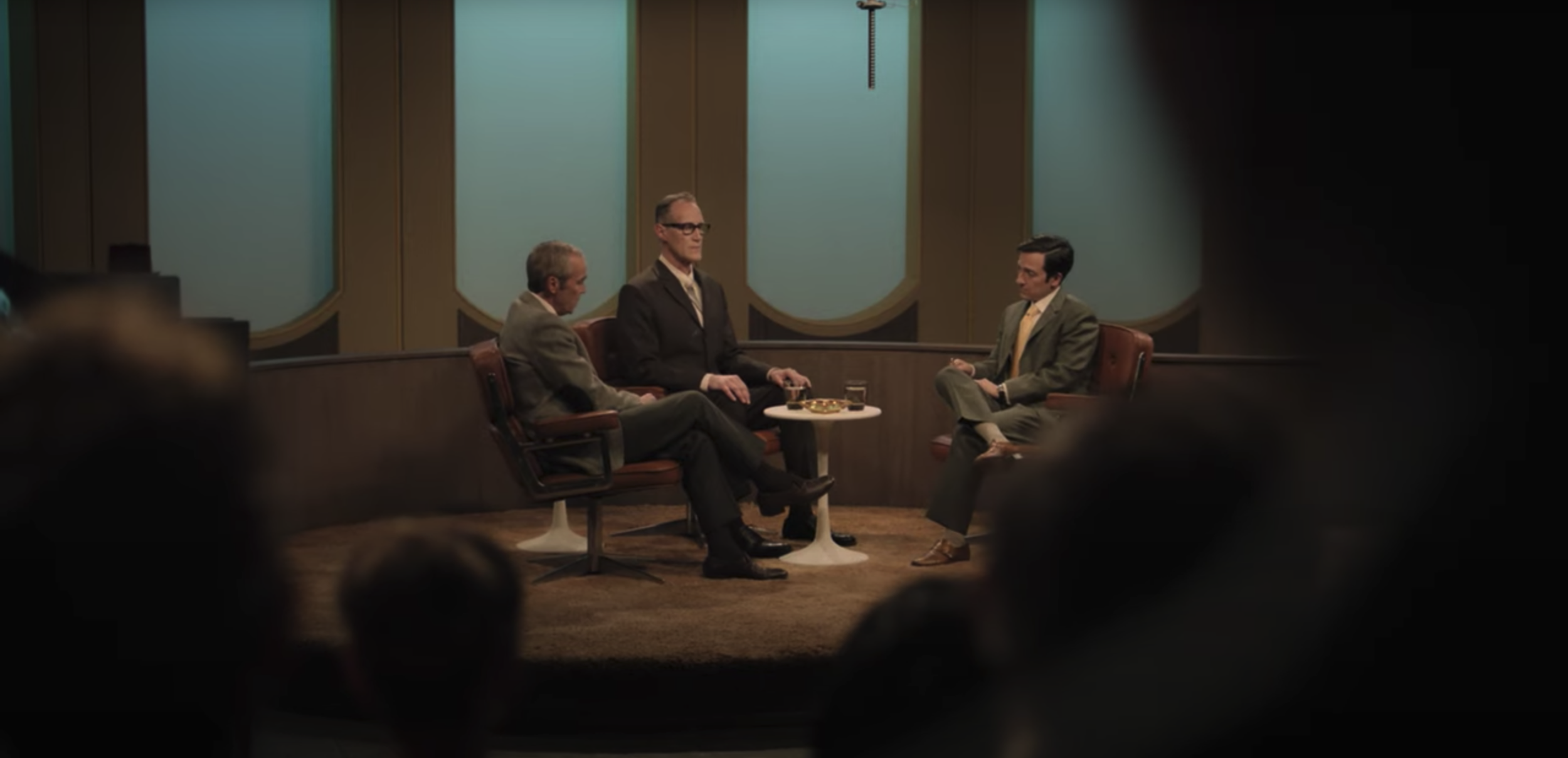
And then we get a bit more serious. Dr. Newman enters the conversation with his theories going against the predicted hypothesis that bacteria and viruses will be the root cause of a global pandemic, but instead it’s about fungi. Editor Timothy starts to lean us in a bit closer to what he has to say through medium shots and medium close-ups. We’re now starting to pay attention. Dr. Newman is onto something here.
“There are some fungi who seek not to kill, but to control… viruses can make us ill but fungi can alter our very minds.”
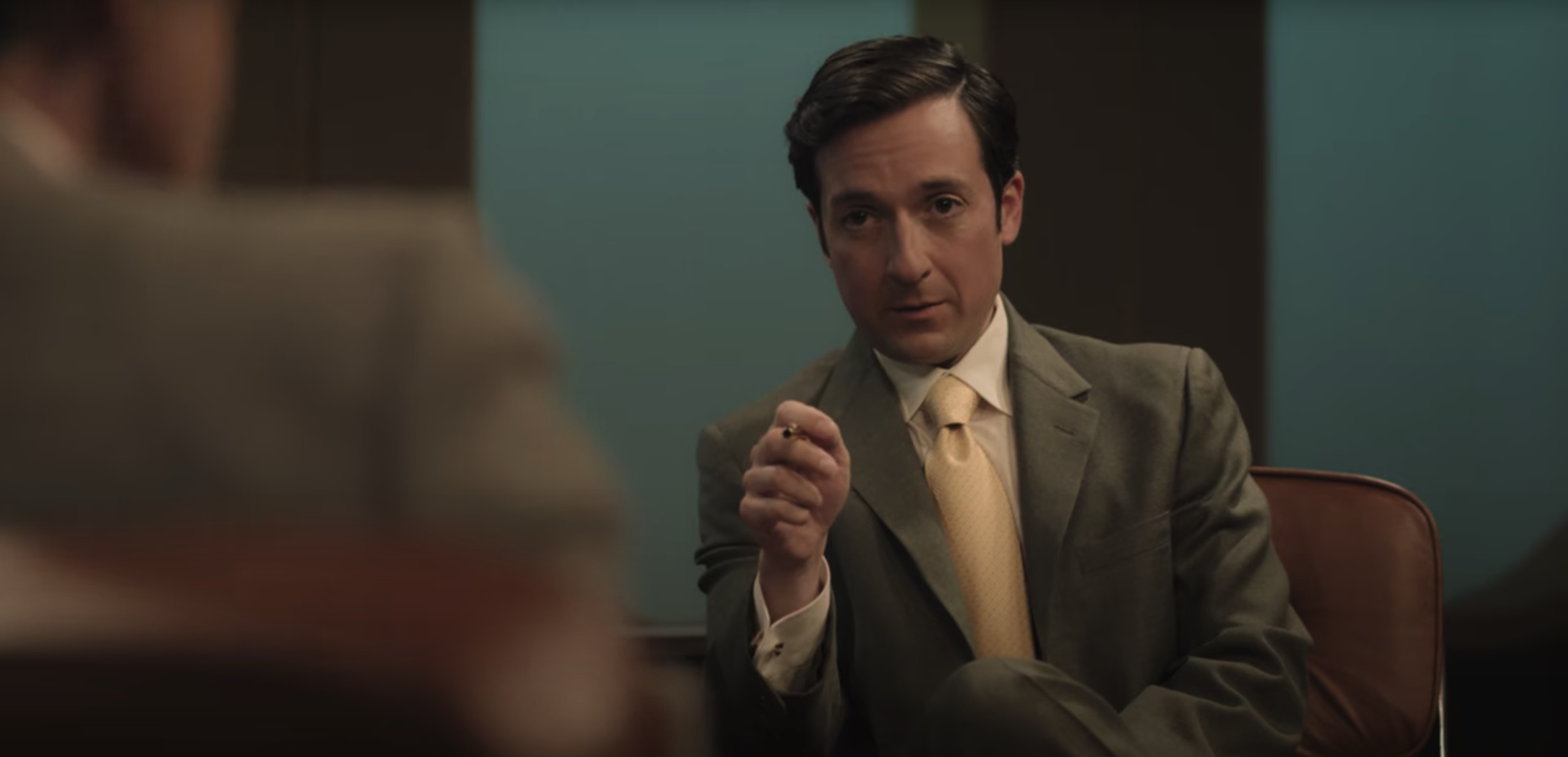
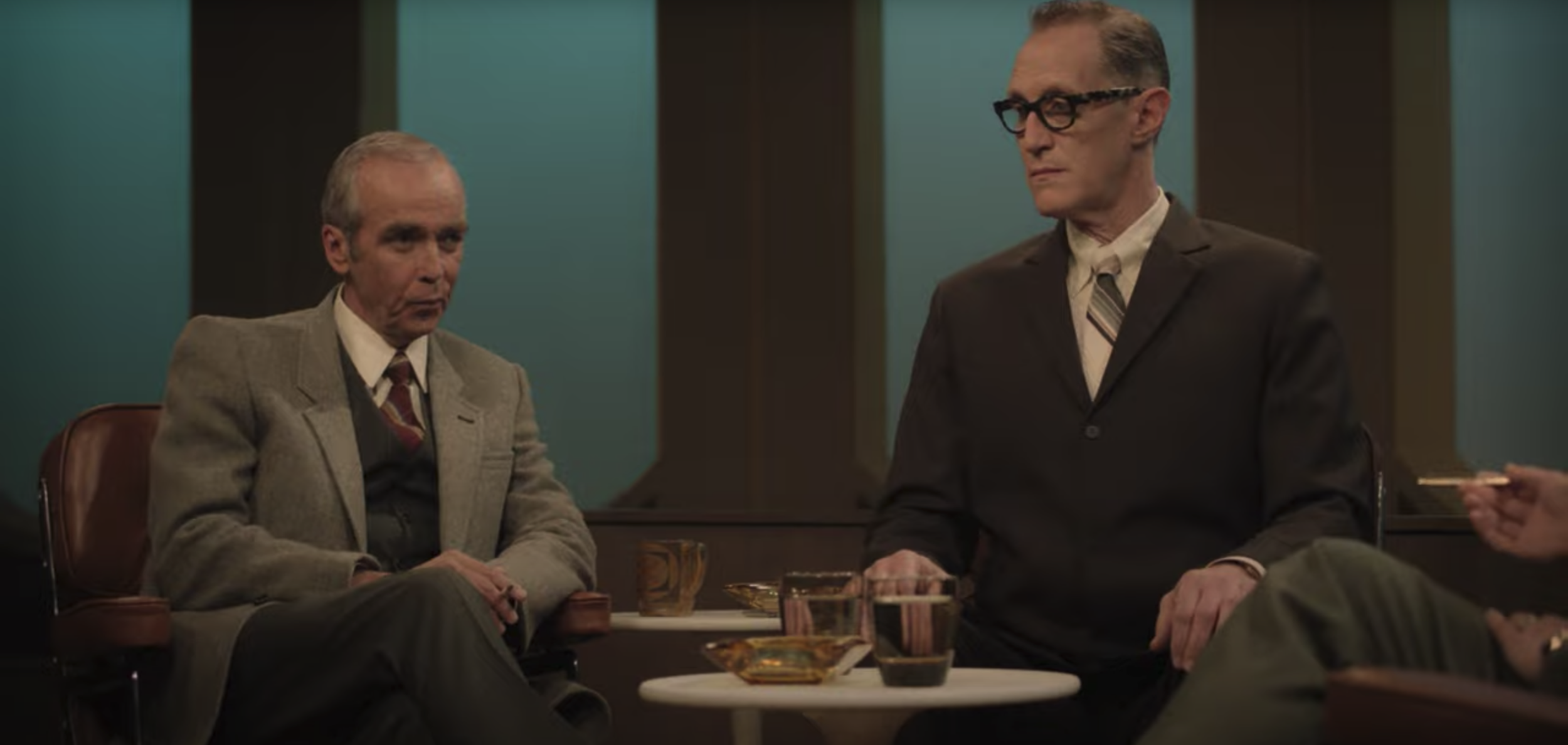
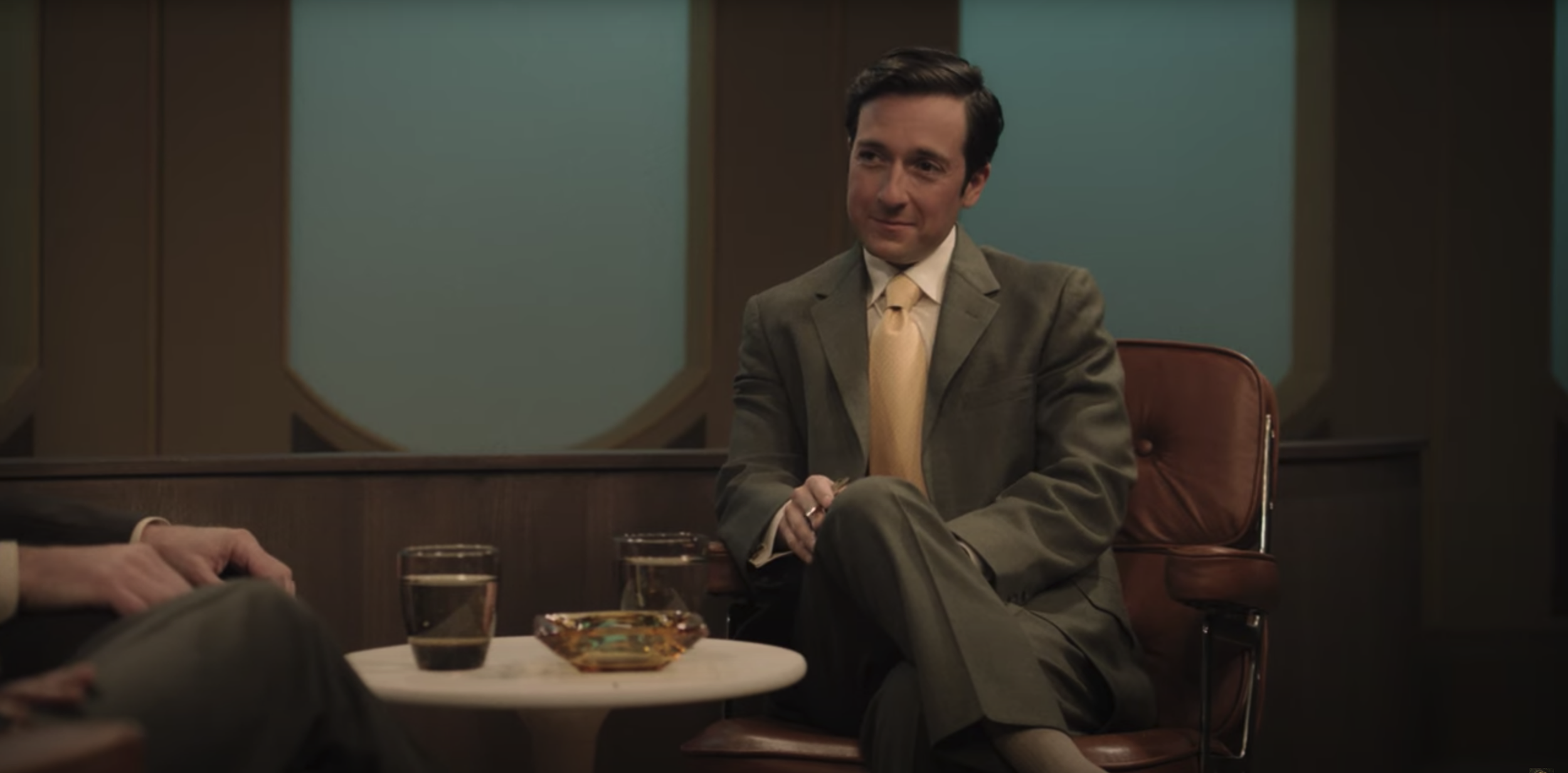
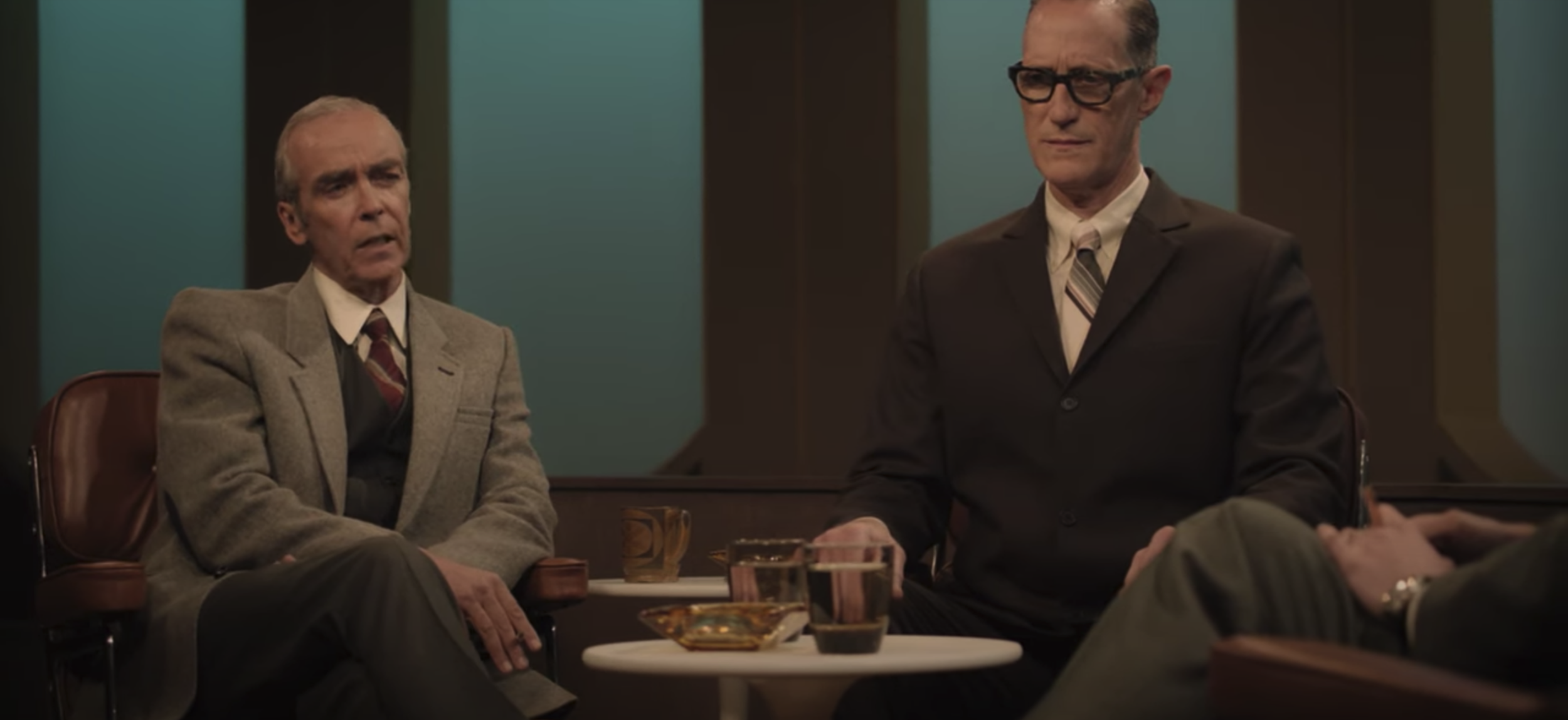
And then we get to the pivotal part of this conversation. Dr. Newman grounds what sounded like an impossible hypothesis to one that sounds very real. Watch how Editor Timothy starts to get closer on the talk show host’s or Dr. Newman’s face. It’s on purpose that we don’t see the first close-up until 2 minutes 24 seconds into the scene. It’s no secret that Timothy is building up the tension and chilling statements. His use of shot selections are correlated to that. We’re then hit with multiple close-ups of Dr. Newman and our talk show host. This is getting very real.
“Any one of them can become capable of burrowing into our brains and taking control not of millions of us, billions of us. Billions of puppets with poisoned minds permanently fixed on one unifying goal to spread the infection to every last human alive by any means necessary… so if that happens, we lose.”
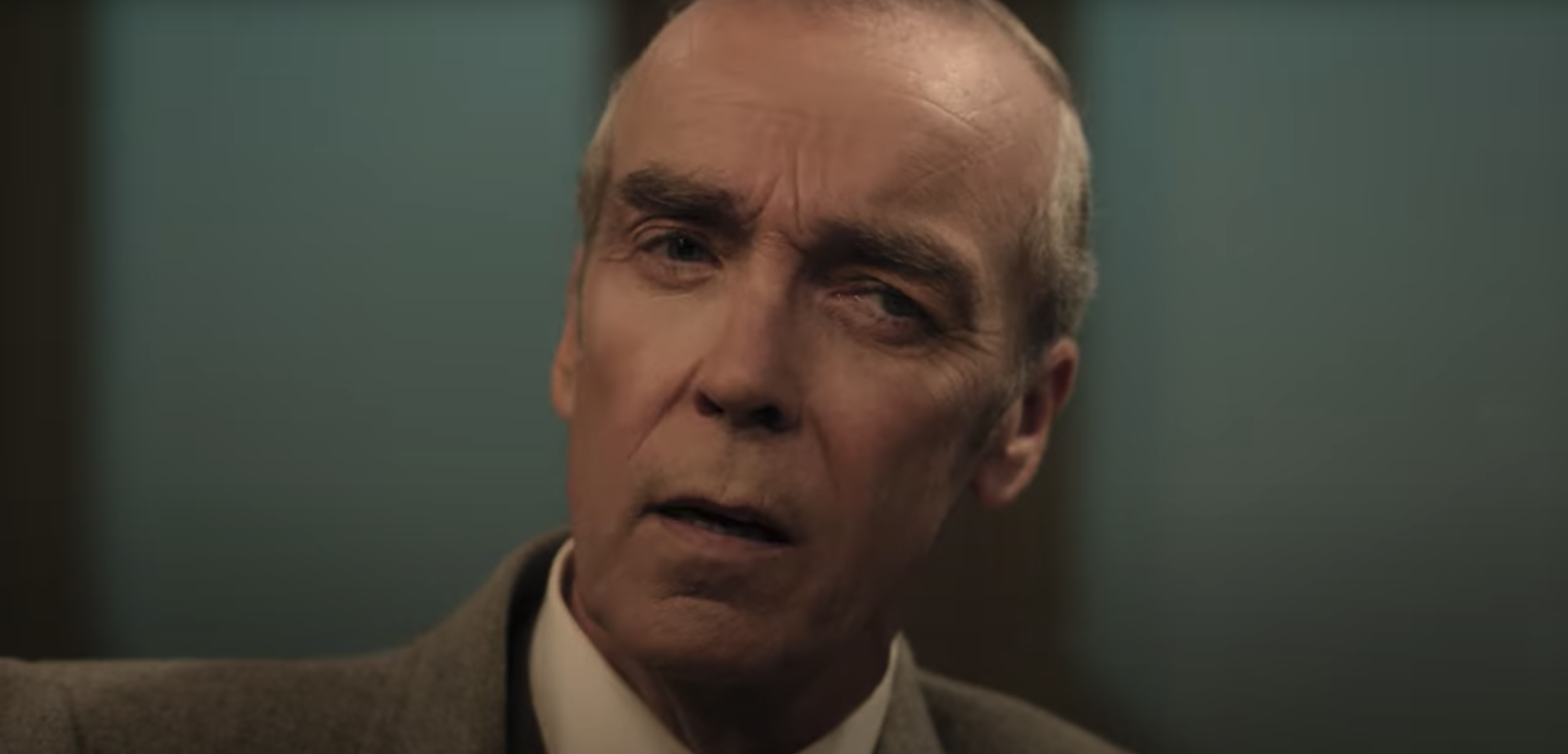
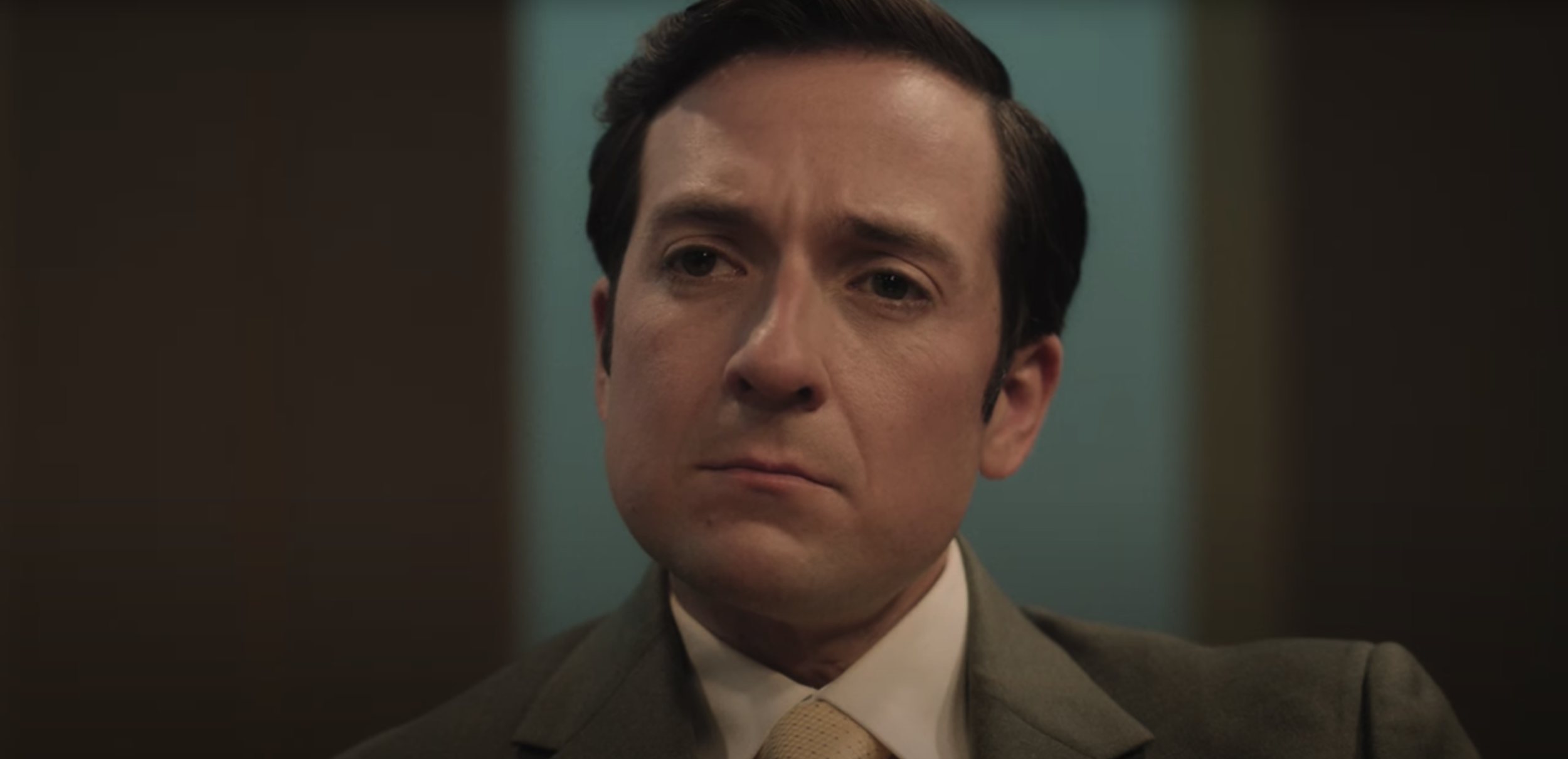
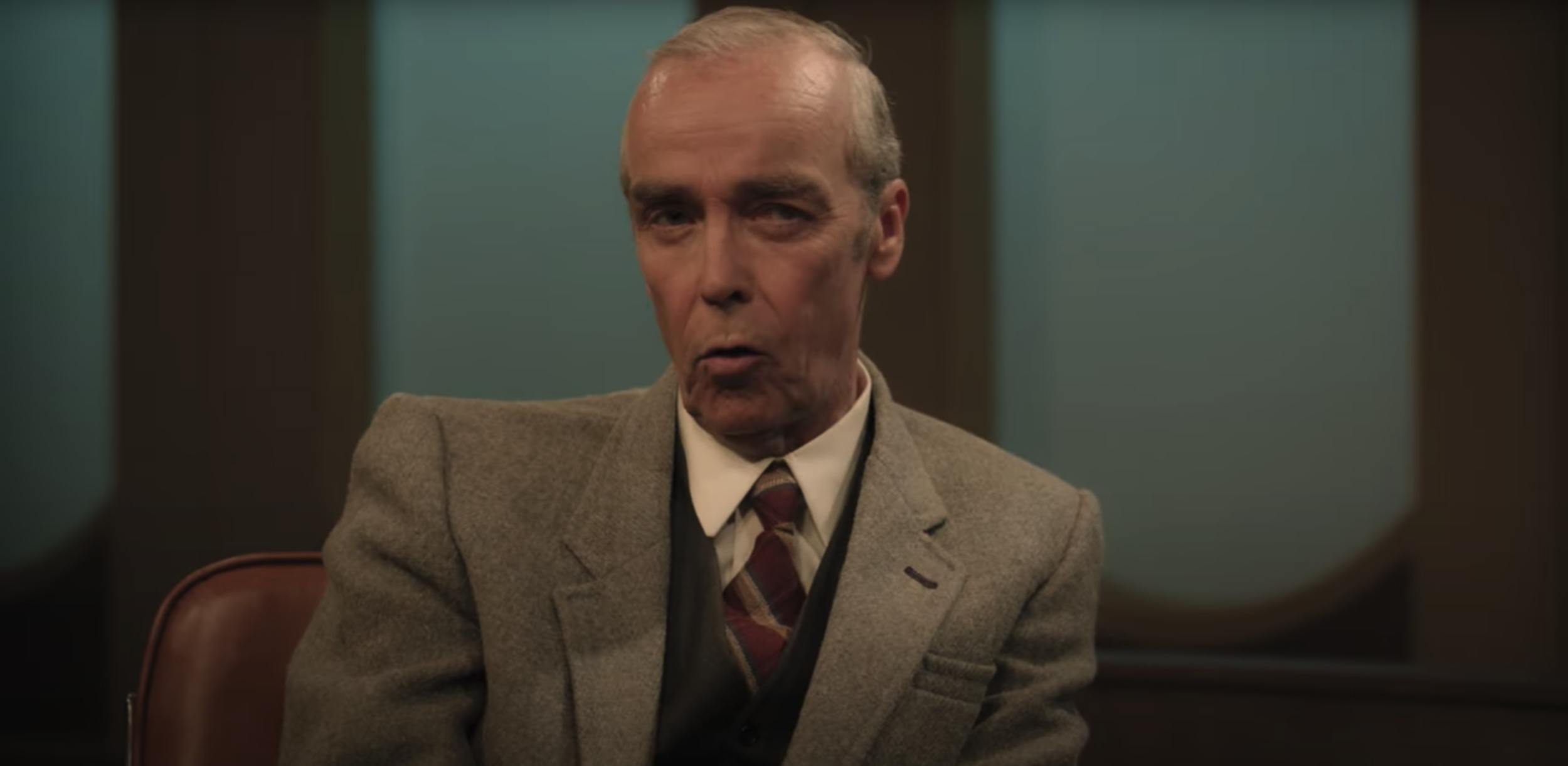
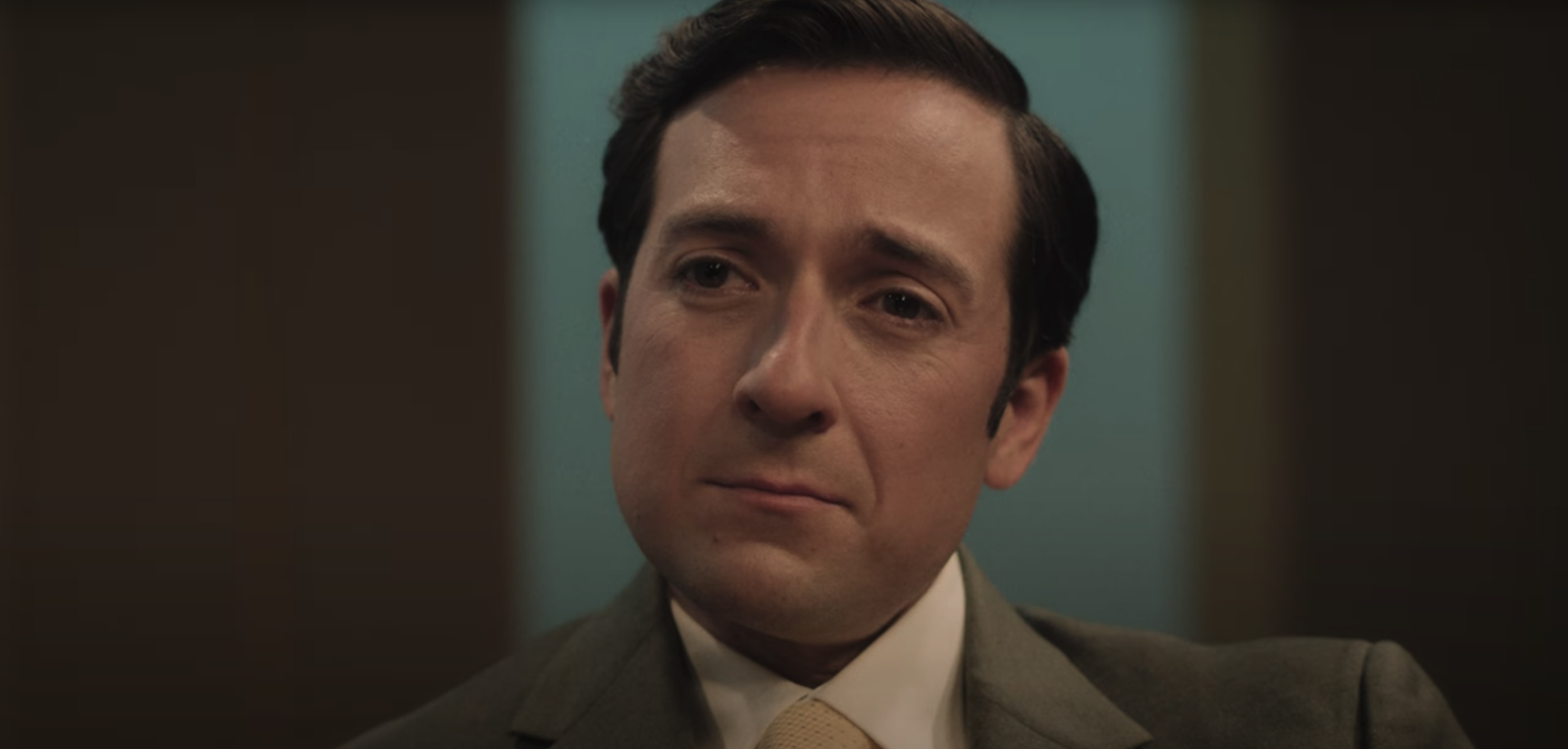
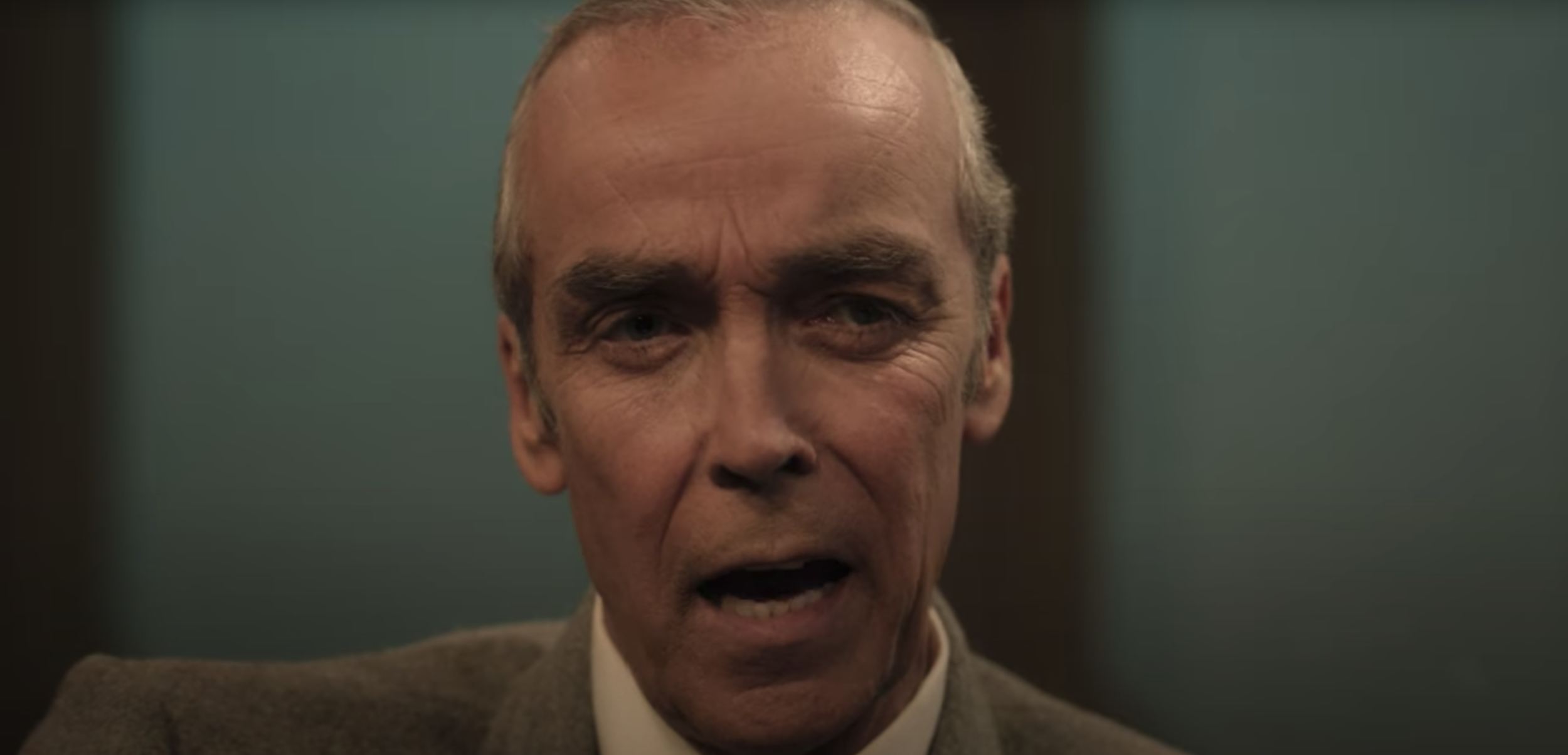
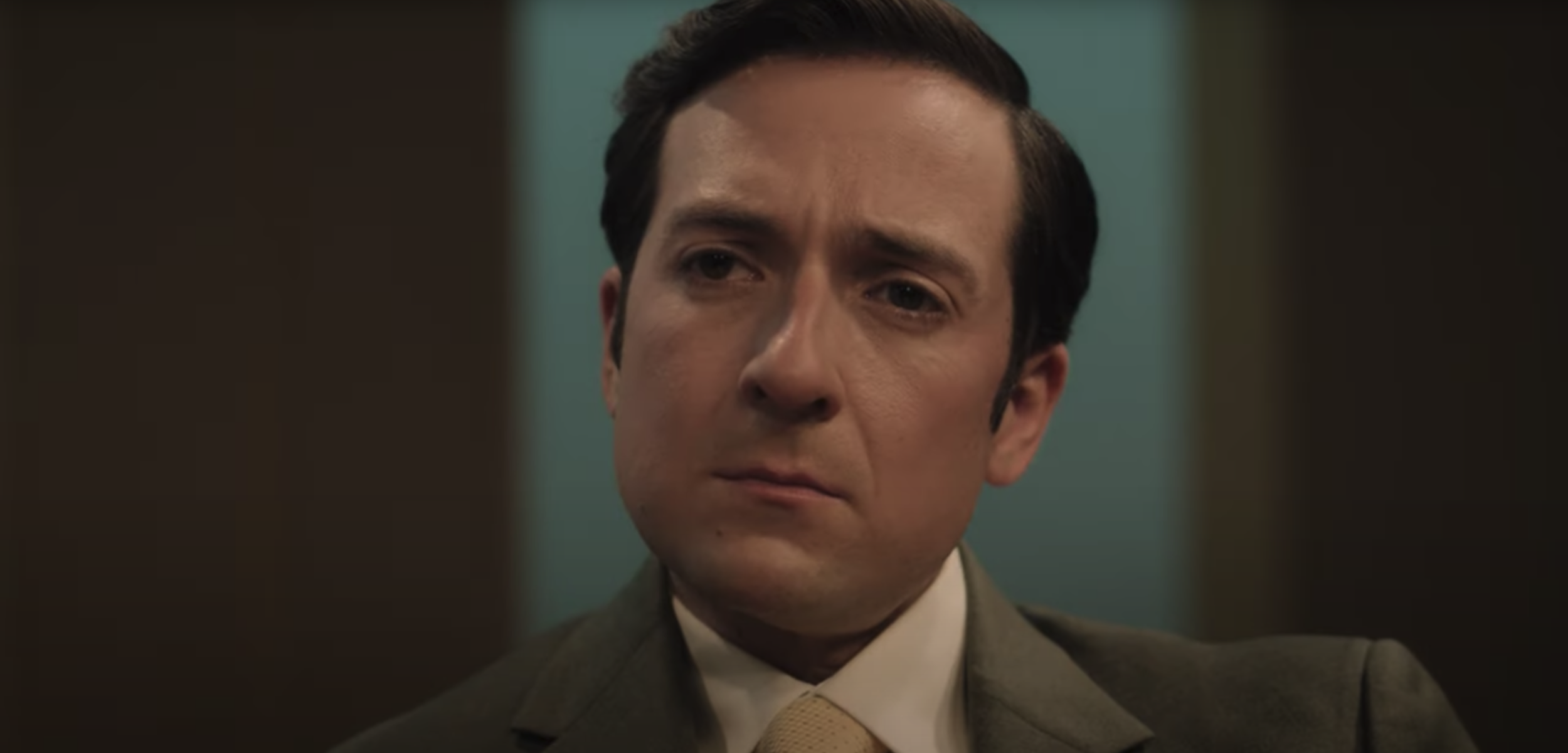
So like I said before, even though it may seem like simplistic editing, the gradual ramp up of being wide to close-up is a very deliberate choice by the Editor. It’s perfect because it gives off a very real slice-of-life scene that makes you stop for a second and ask, “Can this actually happen to us in real life?” Editor Timothy is letting the audience enjoy the tension, the pauses, the half laughs, the hesitations, the seriousness, the reality of it all. And through the perfect use of his shot selections and the gradual ramp-up, he successfully achieves that.
Audience Reactions.
What I love even more about this scene is the fact that they added several reactions of the audience members. The crowd’s stoned, puzzled, and shocked faces add so much to the edit that it increases the credibility of our epidemiologist. Having those audience reactions adds this really dark weight to the scene. You see these audience members, and you can’t help but think that they’re all doomed from this.
Timothy does a great job perfectly placing these reactions at the right parts of the cut. What’s crazy is that there’s only 7 shots cutting back to the audience and camera crew. Seven reaction shots in the entire 3 minute 20 seconds scene! Four of them being the audience members. That can’t be right, it felt like there was more. But for some reason, those harsh lit crowd shots gets burned into our minds after we watch this scene.
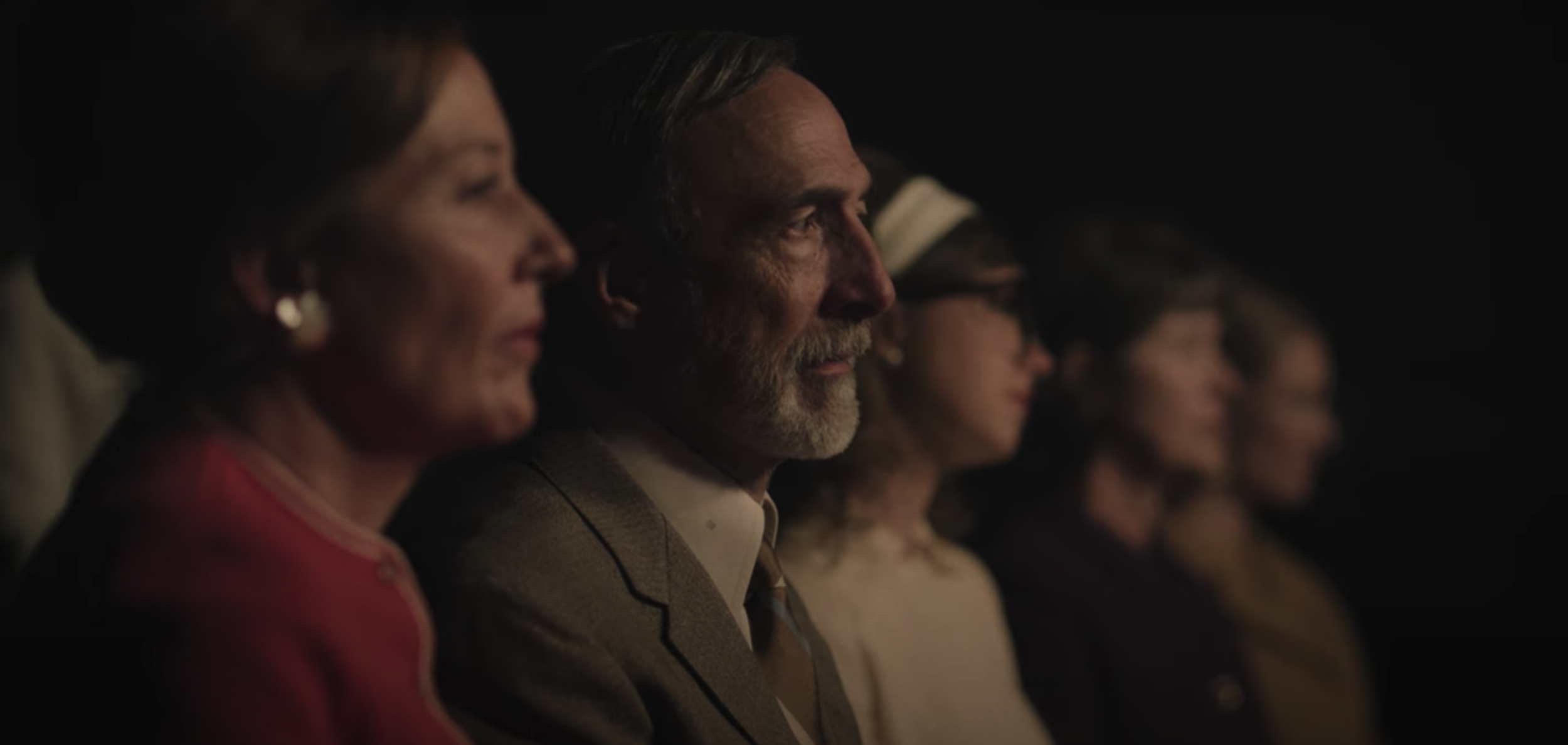
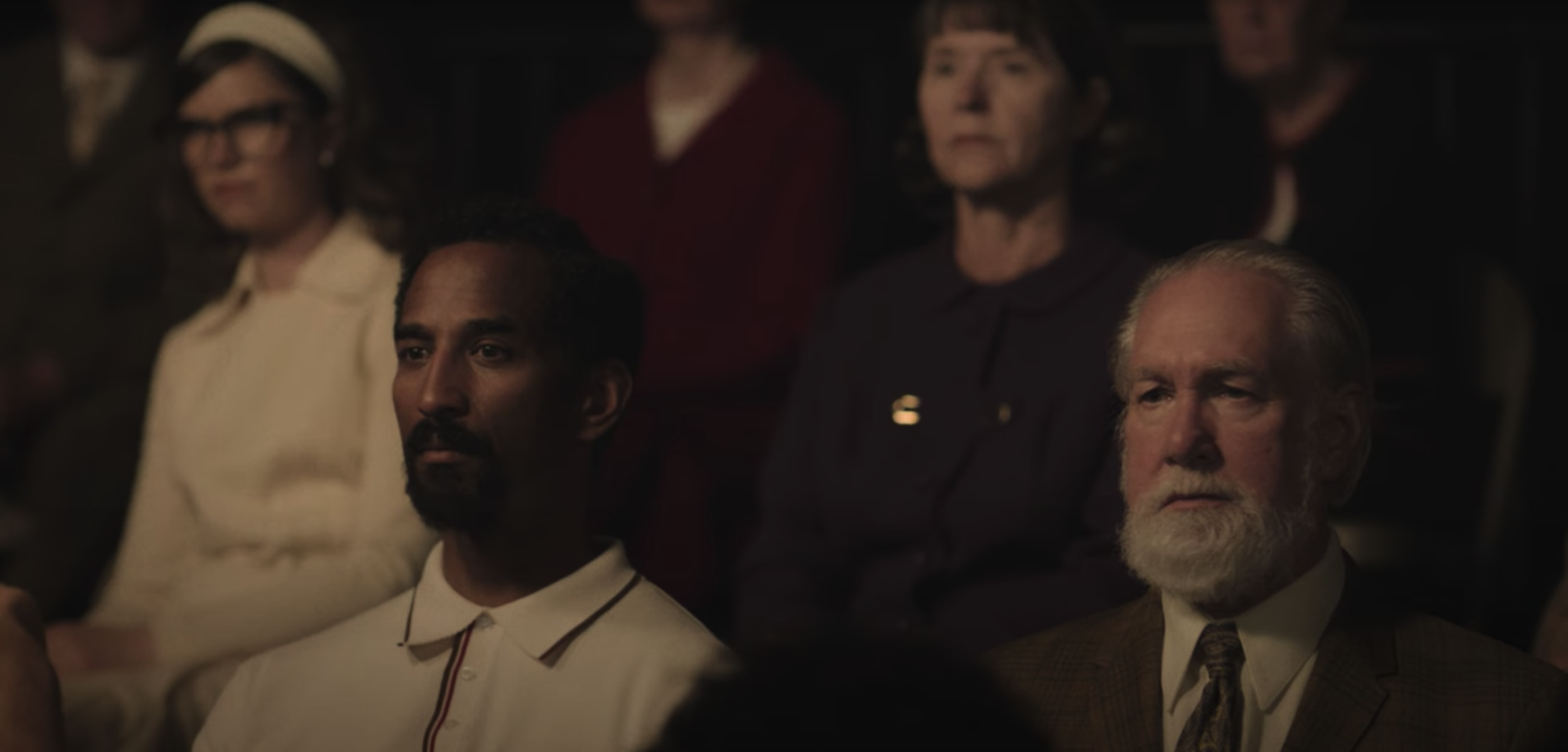
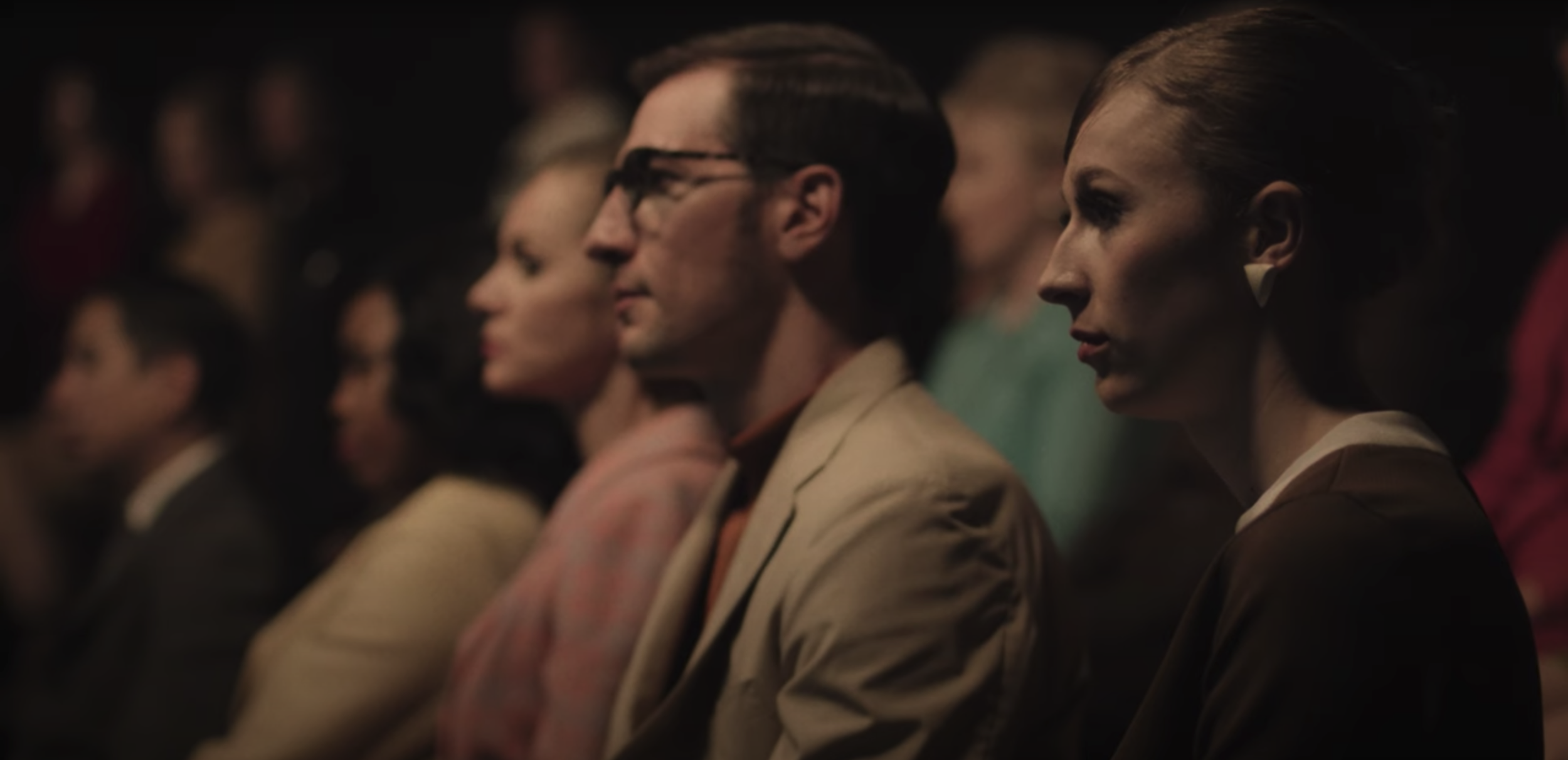
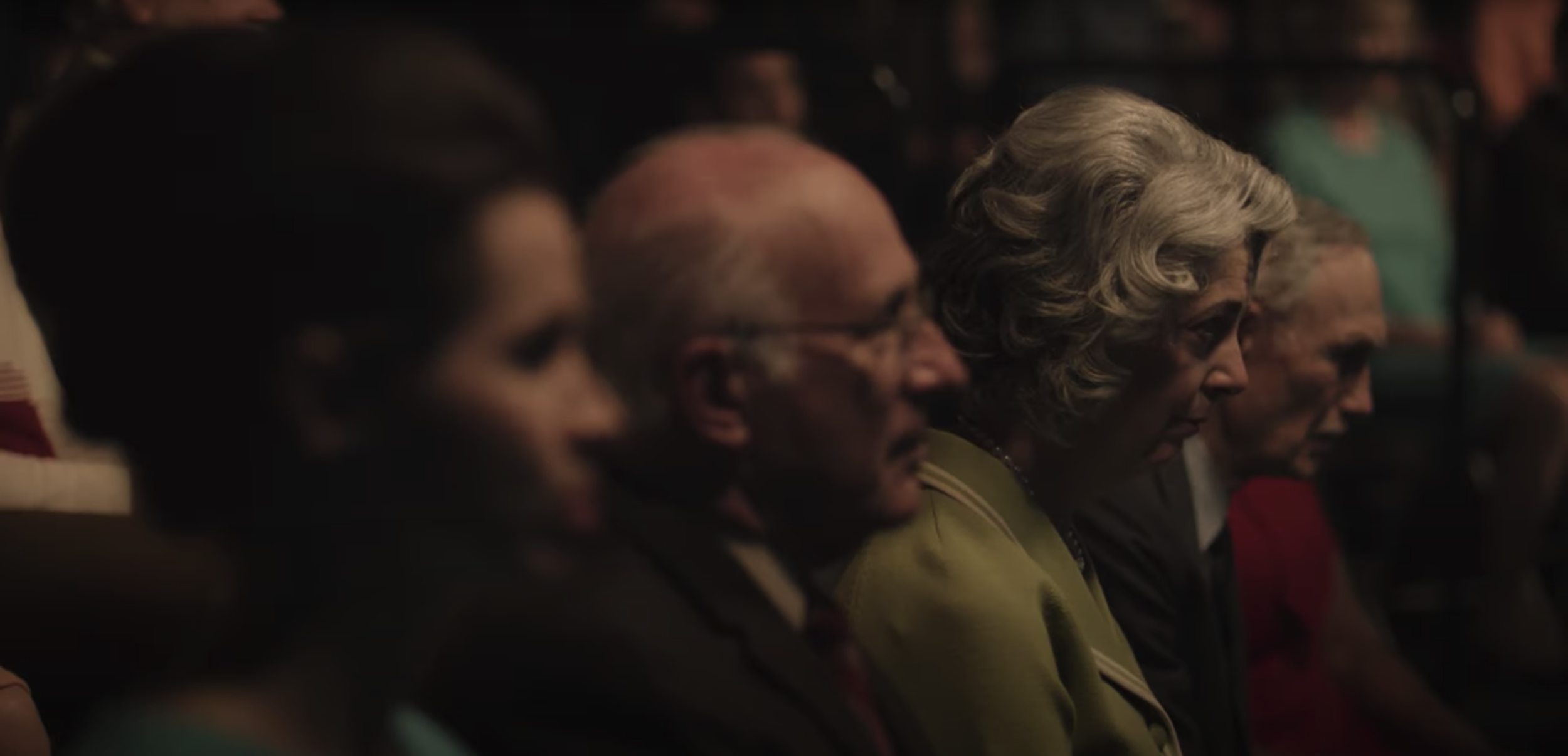
Timothy knew where to place them and he put those grim faces perfectly at the end of the scene when Dr. Newman was talking about “poisoning our minds with one goal, to spread the infection to every last human alive”. Timothy knew that this part of the talk was pointing a finger to us now - the viewer. And the best way to get us to feel like we’re part of that crowd was to place us in that crowd. It’s a very subtle editing decision but it works so well because we’re just as stoned faced and taken aback by what Dr. Newman was saying if this were to come true.
I am curious if in earlier cuts, Timothy had more reaction shots than just those seven. I really loved these audience reaction shots and it made the entire scene feel extremely grim and horrifying. If I were to add more reaction shots, I would probably place more of them in the beginning when the host was cracking jokes, specifically saying “You like saying no” while Dr. Newman was trying to explain himself. I would’ve added some reactions in there to see the juxtaposition of a laughing crowd with the stoned faced crowd at the end. A gradual shift from feeling like this is a normal routine talk show episode to we’re all doomed (like we see at the end). I would’ve LOVED to see that transition and comparison.
The Silence Is Loud.
The choice to have no score or music under this entire scene until Dr. Newman’s last line was such a smart editing decision. Why? Not having any music grounds it all to reality. You could hear a pin drop in that auditorium by the end of that scene - that’s what Editor Timothy wanted us to feel. He wanted us to live in that silence and make us feel like we were sitting in the audience with everyone else. Again, these are the very deliberate decisions that Editors make to garner an emotion from us. That’s what I look for when I break down the editing, the subtle choices that Editors make so that the scene can be showcased to its fullest potential. And “having no music or score” is one of those decisions that makes this scene better.
Imagine if we did have a score underneath Dr. Newman talking, swelling up from the beginning of his explanation all the way through the end. Would it work? Absolutely. It may actually even be more cinematic with a lot more tension. But that’s not what the story is calling for. The dialogue is about how a very real problem could wipe out the entire human species - this isn’t another fake over-the-top zombie movie. This could actually happen in real life! And that’s what Editor Timothy has shown us and intended his edit for. He wants us to live in reality. He wants this talk show scene to feel like it was airing on your TV (or being streamed live on YouTube). He’s putting us in the shoes of an audience viewer in 1968. That’s what the story is calling for.
Editor Timothy Good is looking through the dialogue and asking himself, what will make this scene even more realistic? And having no music creates a very real environment, especially under the reactions of those audience members. The silence IS the music in this scene.
Let’s Put Ourselves In The Shoes of The Editor.
Let’s get technical in this section. Imagine that we have to assemble this scene ourselves as the Film Editor. What should we do first? Like everything, we must read the script and break it down. We know that Dr. Newman’s findings on fungi are the most important piece of this scene so that part has to be on him and up close. The shots leading up to this must also build up to this moment so “leaning closer and closer” as the scene progresses is a good way to start building this scene.
I would start building this scene with all the wide shots first in the beginning, and then as the conversation progresses, add in the medium shots, and then end on the close-ups. That would be my first initial pass. I would then add in reaction shots from the audience on dialogue lines that I want to see them in. Obviously with the constraints of what Production shot, I might not get my way with this “wide to medium to close” formula but I’m aiming for this.
And then once I have this initial pass, I will go dialogue-shot hunting. Meaning, I want to see if there’s any shot that’s on a medium shot that should be a close-up instead because of a specific dialogue line that the character is speaking. Or vice versa, am I on a close-up that can be a wide shot instead? Will it play better that way in the story? The reason for this is I want my impactful or “stinger” lines to be on a close-up and I want atmospheric or reactive shots on a wide so I can feel the audience. So, I’ll rewatch the scene again and see if there should be any swapping of these types of shots.
After that, I will want to see if my reaction shots play well where I placed them. Do I add more? Do I take out some? Remember, Dr. Newman is the center of attention here and everyone else is secondary. So if we have too much reaction shots of the crowd, the audience upstages Dr. Newman and that’s no good. If we have too much of our talk show host, the edit will seemingly imply to us that the opening scene is about our talk show host, so that’s also no good. It needs to be about Dr. Newman because what he’s saying is setting up our entire show and foreshadowing the events of what’s to come for the world. These are the questions I’m asking myself when I watch this scene back. You always have to challenge your cut when you’re rewatching it. Ask yourself if it’s satisfying the story that the script is telling or if it’s going against it. If it’s going against it, you must find the reason why it’s not working. To do that, you ask questions like:
“What is the main purpose of this scene?”
“Who’s scene is this?”
“What are the implied motives of each characters? Even though they say one thing, is that really what their intentions are?”
Is this scene setting us up or foreshadowing a specific plot point for another scene?
“Are we hitting the right beats in the scene? Are the emotional parts working? Are the exposition/set-up parts dragging? Is this scene moving the story along or is it fluff we can take out?”
Challenge your cuts all the time. And don’t be afraid to create alternate versions to aim for a specific goal. I wouldn’t be surprised if Editor Timothy Good had several cuts of this scene with different intentions in mind. He might’ve had:
a) Dr. Newman’s Cut - the closest to what we see in the final cut of the show, where we feature him the most in the scene.
b) Audience Cut - Where we featured more of the audience to amplify the gravity of the situation. This might’ve had a lot more wide shots and cutaways to more audience reactions.
c) Talk Show Host Cut - Where we featured the talk show host more and his reactions versus a mixture of his and the audience.
d) No Audience Reactions Cut - Where it was just the three guests speaking to each other without any audience reactions.
e) Balanced Reactions Cut - Where it would be a shared split of reactions of everyone and a more balanced edit featuring screen time for everyone.
Lastly, I would see if this scene would play well with a score or music underneath. I can 110% bet you Editor Timothy Good tried this scene with music at first and after several unsuccessful attempts to get the right emotion out of the scene, he decided to keep it without music. It works very well to their running theme in this show, which was to get everything grounded to reality as possible.
From here, I would present it to my Director and we’d have more conversations about the characters and story beats and get into finer details on what we’d like to feature in the edit. It’s sharpening the scene until we get all of our beats, pauses, line deliveries, and reactions extremely precise.
In Conclusion.
So I hope you learned something out of this blog, my intention is to point out one very good scene to watch for editing in popular films & television shows so that you can learn while you’re watching. The Last of Us series is filled with great editing so be sure to watch all of the episodes and continue to look out for them. Let me know in the comments below what scene you thought had great editing as well - always love to hear from you.
Lastly, please don’t forget to subscribe to my YouTube, Instagram, Facebook, TikTok, and Twitter channels as I’ll be updating all of my latest content on my socials. I also do 1-on-1 mentoring if you’re interested in learning on how to get into film editing in Hollywood. Feel free to schedule an appointment here. Anyways, thanks so much for reading my blog, until next time!
-Alfonso
